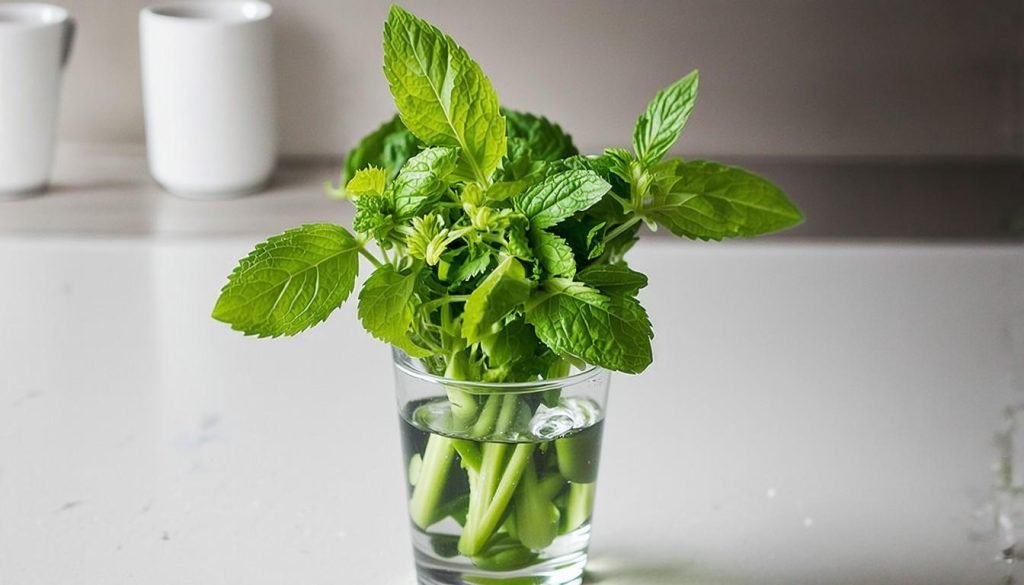Halima Mansoor shares tips on preserving mint and transforming food waste into creative culinary delights while honouring traditional kitchen practices.
From Waste to Wealth: The Transformative Journey of Mint in the Kitchen
London, UK – October 12, 2023: Many of us, at one point or another, have found ourselves guilty of purchasing a hefty bunch of fresh mint from the local market, only to find most of it decomposing in the kitchen bin a week later. In a shift towards more sustainable kitchen practices, inspired by the South Asian culinary ethos, preserving mint has become an art worth mastering, according to Halima Mansoor, a breaking news editor with a passion for culinary experimentation and zero-waste cooking.
Mint, known for its robust hardiness, is notoriously difficult to eradicate. This resilient herb can survive adverse conditions, from overrunning suburban London gardens to withstanding summer hailstorms in Istanbul. Given this resilience, replanting potted mint into a home garden requires no special tools or advanced botany skills, making it a practical addition to any home, regardless of climate.
Urban dwellers, especially those with limited space in flats, often store mint in the fridge in its original grocery packaging, which can lead to slimy, mould-prone leaves. Instead, alternative storage methods can extend the herb’s freshness for weeks. Halima suggests using a narrow tumbler partially filled with water and setting it in the fridge, ensuring the leaves remain above the waterline. Another method involves loosely wrapping mint in a damp, wrung-out paper towel and placing it inside a food-grade wax, silicone, or plastic bag in the fridge.
For a more innovative approach, mint ice cubes offer a versatile solution. Simply place mint leaves (with or without a lemon slice for added flavour) into ice cube moulds and fill them with water. Once frozen, these cubes can be employed as “flavour bombs” for drinks or culinary creations. Blended mint or coriander can also be stored in ice trays, which requires blending the leaves with minimal water and a touch of oil before freezing.
One particularly beloved South Asian staple is green chutney, a versatile condiment made from mint and coriander. In Halima’s household, green chutney was a constant refrigerator feature alongside mustard and ketchup. There’s no single recipe for green chutney, as it varies widely based on individual taste preferences. Halima recommends a base ratio of 1:1 mint to coriander, augmented with garlic, green chillies, dried pomegranate seeds or amchur for tartness, oil, and salt. Ingredients are blended with minimal water, and proportions are adjusted to achieve the desired flavour profile. The chutney can be refrigerated for weeks or frozen with added preservatives like oil, vinegar, or lemon juice.
Innovations in the use of chutney extend into creating hybrid recipes such as chutney pesto. Inspired by Lapis, an Afghan restaurant in Washington, D.C., Halima experimented by replacing pomegranate seeds with sunflower seeds and incorporating Palestinian olive oil to create a pesto variant. This chutney pesto was then used to enrich focaccia dough, resulting in a unique bread that pairs excellently in sandwiches and toasties.
Halima’s ongoing culinary endeavours reflect her deep interest in zero-waste practices and her cultural heritage. She emphasizes that learning to preserve and transform ingredients, like mint, can significantly reduce food waste and encourage creative kitchen experiments. Such practices honour traditional methods while allowing for personal innovation.
In conclusion, the journey from wasteful discarding to inventive preservation embodies both a practical kitchen transformation and a cultural homage. It signifies not only an evolution in the modern culinary landscape but also a respect for age-old practices that encourage making the most out of what nature provides.
Source: Noah Wire Services





